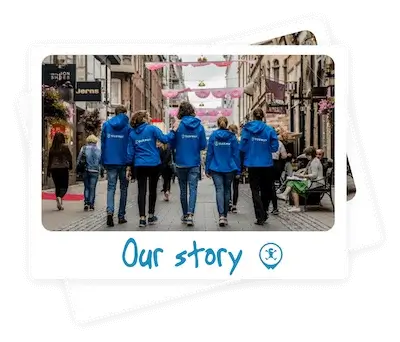The Inner Harbor Bridge in Copenhagen – the story behind it
The Inner Harbor Bridge in Copenhagen binds Nyhavn and the islands of Christianshavn together and is frequently used on a daily basis. Building a bridge across the channel sounds simple, though, right? Yet, it took ages to finalize; why? Here’s the story behind the project and why it took so long to finish.
Let’s take a step back
The Inner Harbor Bridge, or Inderhavnbroen as the locals would say, is a 180-meter, 590 ft long bridge connecting Nyhavn and the islands of Christianshavn together. Prior to this bridge, the only way across the channel between the two busy parts was by boat. Otherwise, you could walk or bike about 600 meters south of here to the closest bridge, which was a bit of a hassle, obviously. So, the idea of the bridge was contemplated and debated about for years until they finally decided to give the project a green light and began construction in 2011 with a completion date in 2013.
The “Kissing” design
The Inner Harbour Bridge has got an entirely new design, with two retractable platforms that can separate the bridge when needed to let boats and ships get through with no issues at all. This is where the nickname “the Kissing Bridge” comes from. This was meant to be a revolutionizing design unique to Copenhagen, which means that it came at a price, a steep one, 200 million DKK, about €27 million. With a project of this magnitude, you’d expect every detail to be exact and everything to work out well. However, pivot that idea, and you’re closer to reality. This is where it went wrong…
“Trust me; I’ve got this!”
2012 comes along, and right away, there’s something wrong. The supporting beams are 60cm, just under 2 ft, too tall! This is a nightmare which delayed the project for 4 months. As the retractable platforms arrived from Spain in 2013, they showed some serious flaws, but the project had to keep going! Soon enough, the third issue came up; the surface had started to crack and needed immediate reinforcements. As the summer passed and more flaws needed to be addressed, the main contractors declared bankruptcy and stopped all work on the bridge for 9 months.
In December, a storm hits Copenhagen and floods the machine room and 2 engines beyond repair. At this point, it’s past the original completion date, and the cost is rising. But a new polish contracting group takes over the project! As the construction continues, in 2015, one of the draw wires connected to the retractable platforms snapped, which means more delays!
As 2016 came along, they discovered that the wheel system that retracts the platforms were too weak. This called for an entirely new system which was finished in April 2016. On top of that, in May 2016, the cold water mixed with the warm spring air made the bridge bend and skew more than intended. However, this is something they should’ve seen coming, as the same thing happens more or less every year in Copenhagen.
Completion
After a nightmare project filled with problems, it was finally opened in July of 2016 with another 100 million DKK added to the bill, which is now at a total of 300 million DKK. This creates the next issue, who’s going to pay? Think about that one…
Today though, it stands as the majestic bridge it was designed to be. It’s used daily by thousands and thousands of pedestrians and bikers.

